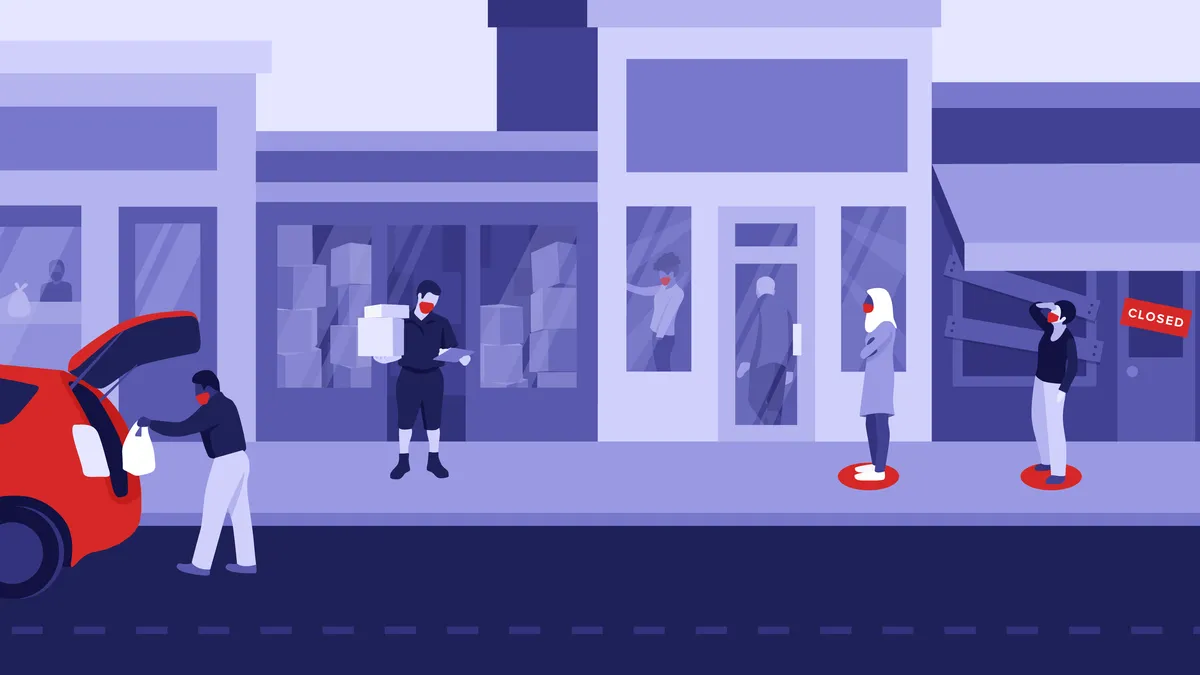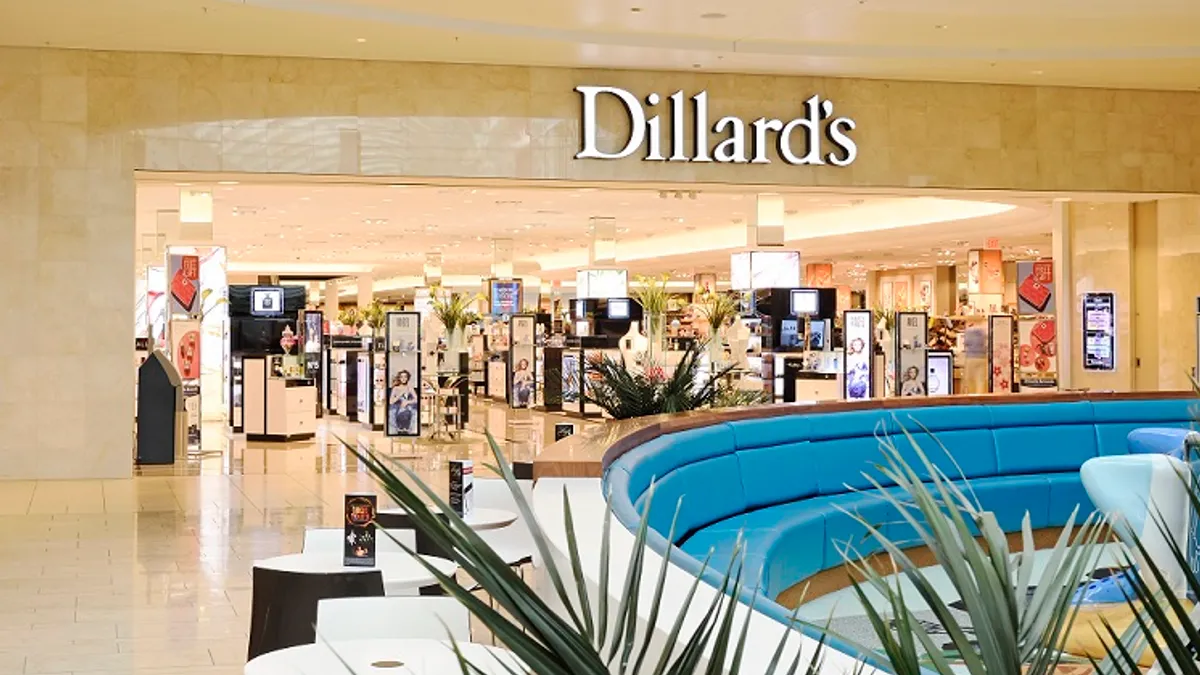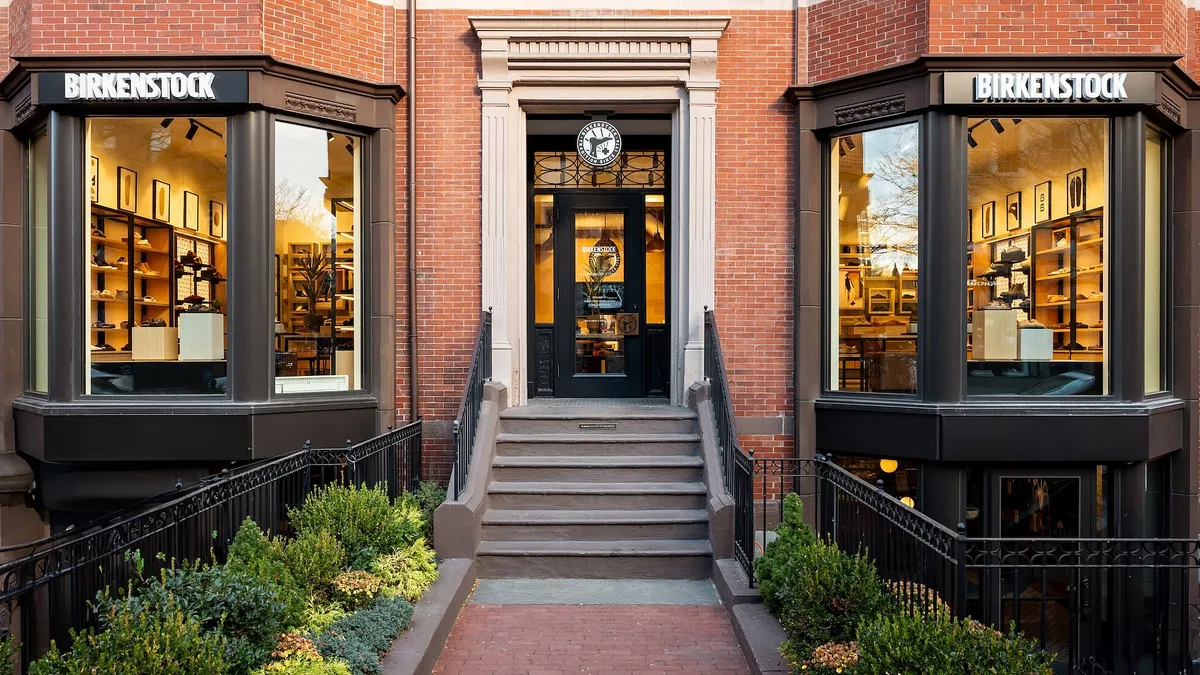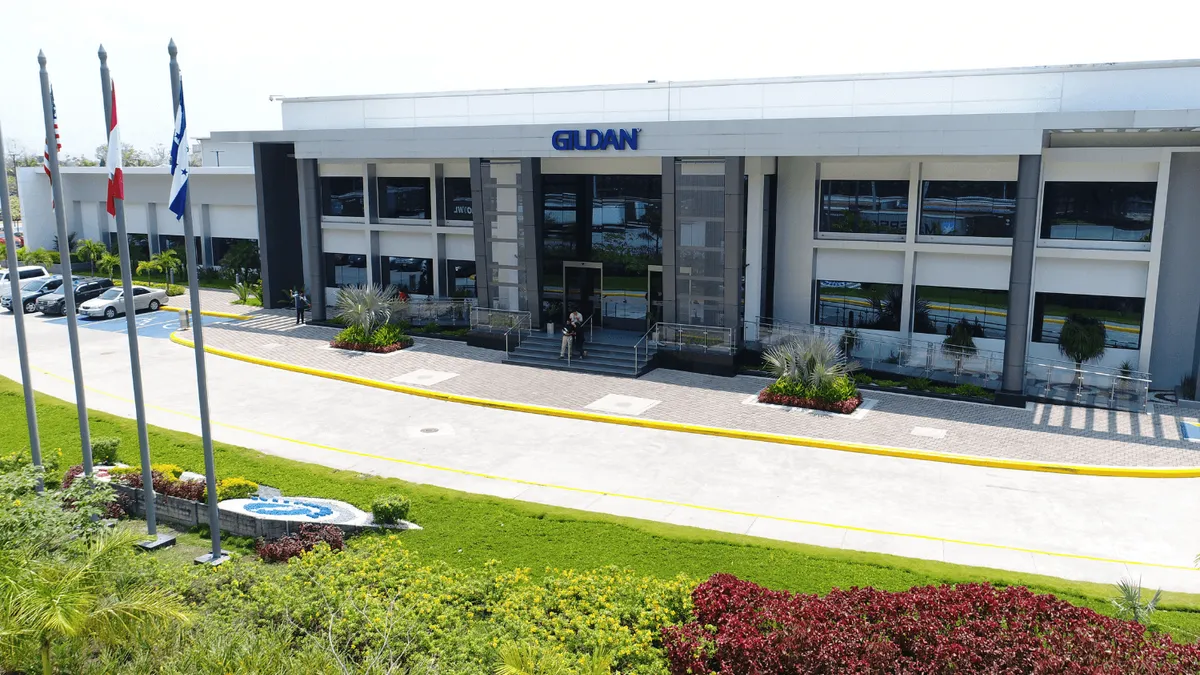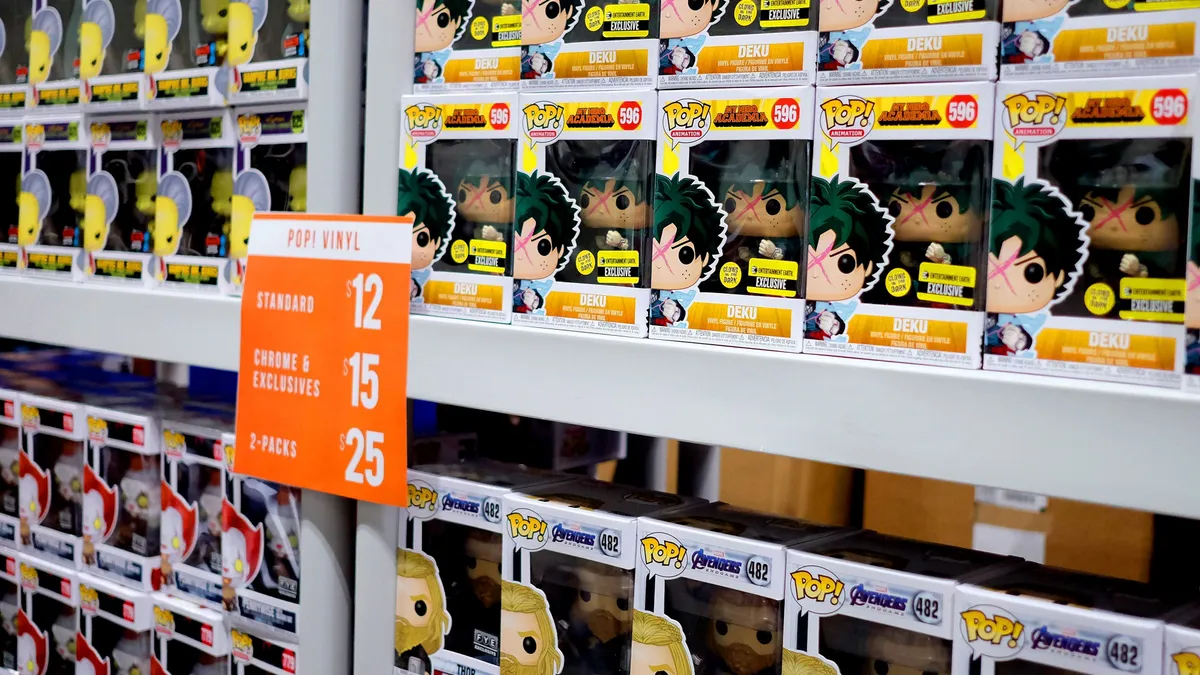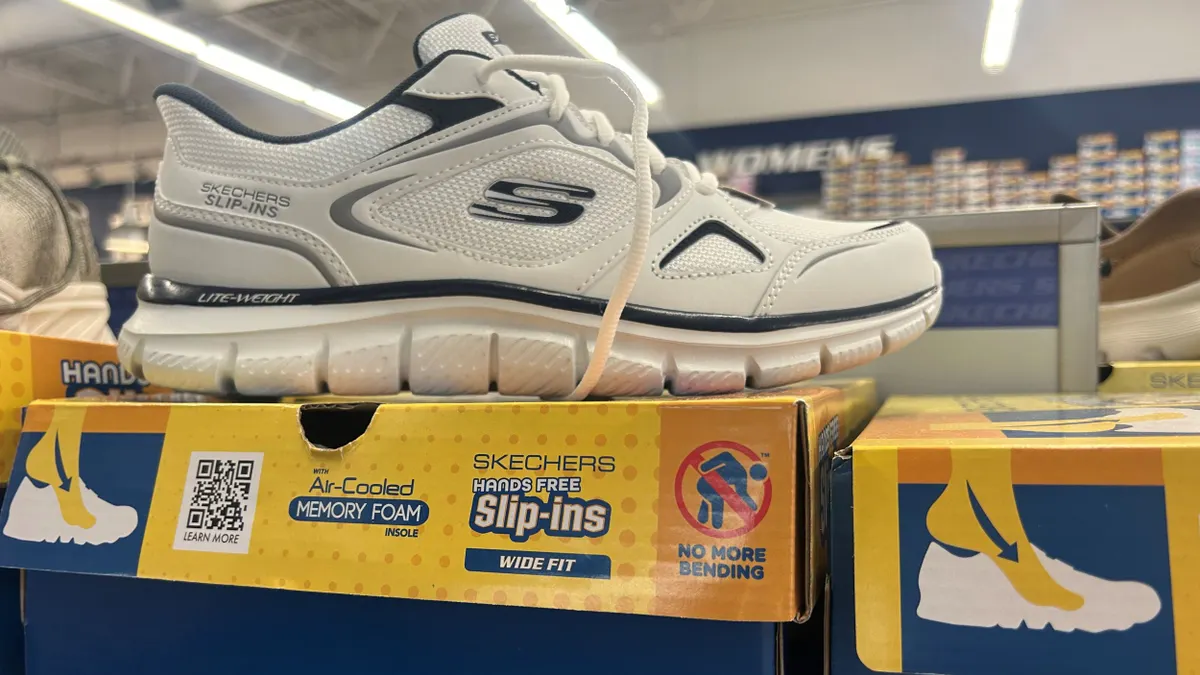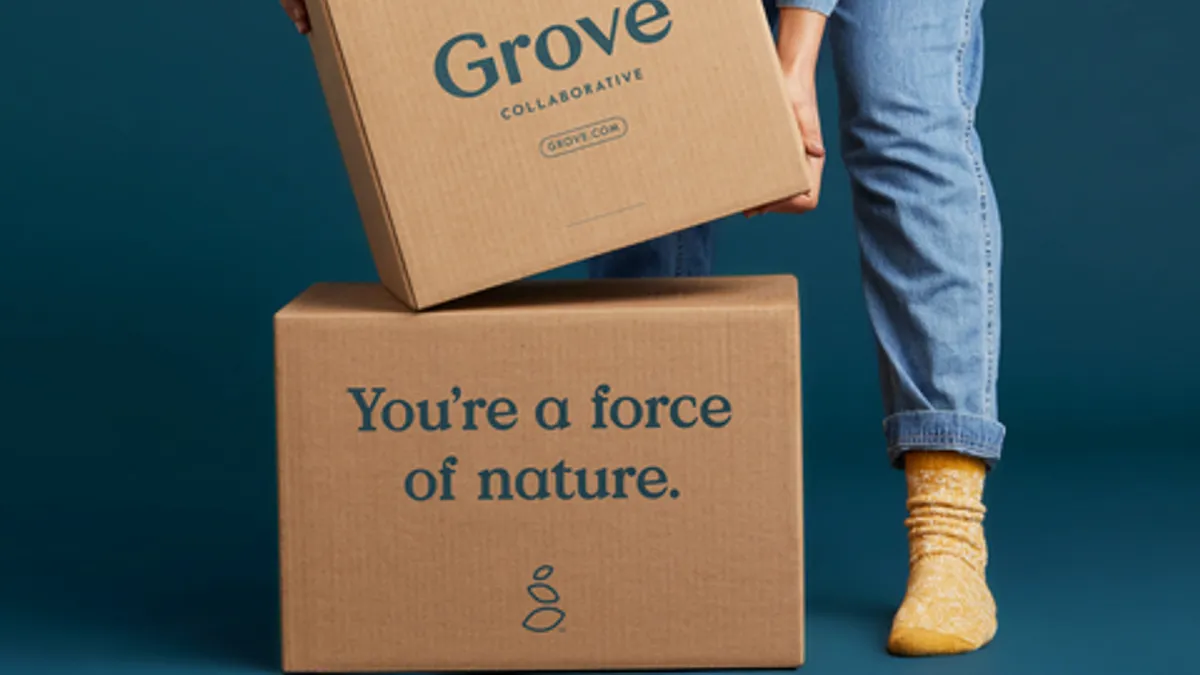Editor's Note: This story is part of a series about the pandemic's impact on retail in 2020, and what it means for 2021. Find the rest of the stories here.
Imagine that it's the first week of January 2020 again. Justin Bieber has a new song. Impeachment is the talk of Washington, D.C. There is news of a flu-like virus outbreak in China, but unless you're an epidemiologist or travel to the country, you might not be paying that much attention. There haven't been any reported deaths yet.
Now imagine a time traveler arrives and tells you what is to come: An out-of-control pandemic, full hospitals, mass deaths, stay-at-home orders, social distancing. In retail, the largest chains in the industry, along with scores of smaller retailers, close their entire footprint for around two months. There's also triple-digit digital sales growth for some, the sudden prominence of curbside pickup and massive financial mobilization as companies try to stay afloat without their stores open.
Such a time traveler would probably have been dismissed as a delusional crank. It doesn't sound possible. And yet, it all happened. The entire industry changed, in multiple ways, overnight.
"My whole life deals with getting people to do things that I know they can do that they don't think they can do in ways that I know they can do them, but they don't think they can do them," Joel Bines, co-head of AlixPartners' global retail practice, said in a fall interview. "And there's so much plaque in the system that prevents them from doing it. And then all of a sudden, the country shuts down."
The year 2020 taught retailers the outer bounds of risk and reality as most have known it to-date. The question for the year ahead and beyond is: Will they internalize those lessons, and will they apply them to both crises and opportunities not yet at their doorstep?
A new appreciation for cash
Last spring, the industry went through a collective event without precedent in modern retail. Well over 100 store chain operators closed their full footprint starting in March. Reopening didn't start broadly until early May.
For many, if not most, of those companies that closed their stores, that meant their primary revenue channel was simply shut off for that period. Excepting those deemed essential because they sold food or other non-discretionary goods, the industry was put in hibernation. Suddenly, every discretionary retailer's cash flow was of prime importance.
"When you're entering a choppy period, cash is king, and so you want to activate all of your cash-generating maneuvers," Bines said.
Retailers took dramatic measures simply to stay in business while turning off the main cash spigot. Overnight, seemingly fixed aspects of a company became flexible.
Some of these went to the very heart of a retail business. Vast numbers of employees were put on furlough until further notice. Product orders were put on hold, and many retailers insisted on longer payment terms with suppliers on future orders. Retailers also skipped rent or put it off. All these are things that would put relationships in serious risk in normal times. Even during a pandemic they strained relationships with employees, suppliers and landlords.
Along with core functions, companies also raised and preserved cash by nixing dividends to shareholders, cutting back executive pay and tapping their credit lines for cash. In short, the rules for operating were flipped overnight. It showed how malleable the rules were to begin with, not to mention how vulnerable even seemingly healthy companies can be when crisis comes.
According to RapidRatings data sent to Retail Dive, the industry as a whole in 2020 improved year over year on a measure of short-term resiliency and default risk, a marker in large part of how much liquidity companies raised to weather the COVID-19 crisis. At the same time, a financial health score measuring medium-term risk fell for the sector as those same companies took on new liabilities and struggled operationally to make up for the pandemic's hit to cash flow.
In response to the turmoil of 2020, Bines said retailers are now thinking more about setting up their businesses to consume less cash on a fixed basis than they did before, making them less vulnerable to shocks like the pandemic.
"At the highest level, the way you do that is you variablize as much of your expenses as you possibly can, even if it means that you pay more per unit than you would otherwise pay," Bines said. "The variabilization means that if volume drops, you don't have that fixed expenditure associated with that kind of stuff." That, in turn, means your fixed costs don't become a sudden massive risk if revenue gets turned off by a major event.
Examples of this sort of variablizing include switching from a fixed payment model with landlords and suppliers to revenue-sharing arrangements. Retailers might also need to ease their fixation on gross margins.
"At the end of the day, inventory is cash," Bines said. "Every time you walk into a store, and you look at a rack of clothes, you should be looking at a rack of dollar bills. You want to push as much product through your own retail channel as you can and think very hard about what you want to do with items that are old or potentially have been obsoleted."
E-commerce: 'We've got to do it'
In retail operations, one of the starkest overnight changes was how e-commerce suddenly took center stage. While online shopping looms large for investors and media, it represents a relatively small share of the overall retail pie, and a similar fraction of many individual retailers' own sales.
But when retail chains shuttered their stores en masse to join the fight against the pandemic, e-commerce became the only kind of commerce for many. At Macy's, for example, e-commerce grew 53% in the second quarter while stores sales fell 61%. At Nordstrom, digital jumped from 30% of sales in Q2 2019 to more than 60% of sales during the same period last year. Digital penetration also doubled at Dick's Sporting Goods during the quarter. And those are just a few of those that saw massive spikes.
"We just proved anything is possible. As an industry, if you look at what we did, we took five years of e-commerce penetration and accumulated it in five months," Bines said. "If we can do that as an industry, we can do anything."
The pandemic forced retailers to speed up the transition to digital, whether they were ready or not.
"For traditional brick-and-mortar retailers, if anything this has accelerated their digital transformation — that's painfully obvious," said Damian Walch, managing director and leader of the business resilience unit at Deloitte.
Speed in building out new capabilities is something retailers haven't always excelled at. In the past, "even for the most agile retailers it took forever to do things," Walch said. "Some that have ignored digital and e-commerce said, 'We've got to do it.'" Which meant that they not only had to execute but also make decisions much faster than they had in the past.
"How do we do it? We do it with spray paint and cardboard signs and emailed spreadsheets. Is it sustainable? Of course not. But can you do it? Of course you can."

Joel Bines
Co-head of AlixPartners' Global Retail Practice
The quick expansion comes with its own risks. While retailers build out their e-commerce and omnichannel capabilities, they need to "make sure they do that in a more resilient, hardened manner," meaning that "e-commerce sites don't go down if you're pushing people to the web or to an app, that you're doing it in a very hardened manner," Walch said.
Along with e-commerce, curbside and store pickup channels also exploded during the year. In the holiday season alone, curbside rose 88% year over year between Nov. 1 and Dec. 9, according to Adobe Analytics. (Later numbers from Adobe showed 36% curbside growth for the season through December.)
Going back to Dick's in Q2 2020, the sporting goods specialist said e-commerce sales, including those via its contactless pickup option, skyrocketed by 194% during that period, which included weeks of store closures. GameStop, which posted an 800% rise in global e-commerce sales during Q2 2020, said it was able to recapture 73% of sales at stores closed for the pandemic through its curbside channel.
Some retailers were prepared before the pandemic for the shift to curbside and store pickup. Target began rolling out its Drive Up curbside option across the country in 2019, and consequently had the capacity when consumers started using the option during the pandemic. The retailer then posted triple-digit growth in its same-day service channels, which includes curbside, throughout the year. During the holiday period, Target's curbside sales grew 500%.
But others put together a service for their customers essentially overnight. "We operate with 85% of our staff furloughed, we get on BOPIS in two weeks, we extend this out to parking lots," Bines said, describing the ad hoc and desperate adaptation among retailers during the closures. "And how do we do it? We do it with spray paint and cardboard signs and emailed spreadsheets. Is it sustainable? Of course not. But can you do it? Of course you can."
He added, "That's what resiliency means, right?"
'Starting with supply chain'
Like in-house operations, retailers' supply chains came under intense strain and went through wild convolutions last year amid the pandemic.
Starting with the initial outbreak of COVID-19 in China, the coronavirus itself disrupted manufacturers and others along the supply chain. Then came the long weeks of store closures, with cancelled orders and mothballed inventories. When stores reopened, sellers entered a world of unpredictable demand and wildly different trajectories for some product categories. Work fashion plummeted. Toilet paper and bicycles sold out.
"Supply chain is, quite frankly, being put in a position that it has not been in the past."

Curt Mueller
Senior Partner with McKinsey & Company
The crisis, perhaps for the first time, put supply chains front and center for retail companies. "If we go back 10, 15 years, what was dominating retail was brands — marketing, new product introduction, new features, segmentation and tailoring to different consumers," said Curt Mueller, senior partner with McKinsey & Company. "It was like, 'It's great that I have a supply chain, but the supply chain just needs to deliver, that's all I care about, because I'm going to build a great brand.'"
The pandemic changed all that. "You go on any analyst call, you go on any earnings review, you're really starting with supply chain," Mueller said. "Supply chain is, quite frankly, being put in a position that it has not been in the past."
In response, companies are working more to assess risks, be more strategic, and become more agile through information sharing with suppliers. To be more resilient going forward, Mueller noted, involves accurately assessing the risks to supply chain and deciding financially which risks to cover. That's not always an obvious calculation for retailers, which operate on thin margins and, if owned by public shareholders, often face pressure to hold down capital costs.
And the risks are many. The once-in-a-century pandemic shock is just one among many possible. Supply chains going forward face risks from new pandemics to cyberattacks to political and social unrest to climate change. As McKinsey noted in a report late last summer, "Shocks that affect global production are growing more frequent and more severe."
After the shock of COVID-19, and without knowing what risks will actually come to pass, agility becomes key. "How quickly can you move to capture new opportunities? How quickly can you move to avoid huge pitfalls?" said RapidRatings Chairman and CEO James Gellert, describing what supply chain resilience means today. "How can you grow quicker than you have before to capitalize on a competitor's weakness? How can you source from one place versus another? How do you source a product when a key supplier goes under?"
Doing those things, he added, requires a "well-organized machine where you have a procurement organization that is well tied to the finance organization, and the supply chain managers are plugged in and purchasing managers are plugged in, and everyone is singing the same tune and operating in a cohesive way that is coordinated with a common mandate from senior management in a company."
Along with agility, transparency is coming into focus. That is, transparency between retailers and firms in their supply chain. Success and even survival for both sides often means knowing the needs and the financial health of the other.
"If there isn't sharing of information and there isn't transparency, then it can only be an arm's-length relationship and a commoditized relationship, where someone is buying something from someone else as opposed to being strategically aligned," Gellert said. "That, to me, is one of the central points particularly in retail, where the industry is changing and has been changing."
A wake-up call
The COVID-19 crisis and retailers' rapid adaptations to it shattered old ways of doing and thinking. It also highlighted the concept of resilience itself, which before may have seemed like a distant abstraction for retail leaders not caught up in the urgent day-to-day business of mere financial and operational survival.
"I've been in this discipline for 30 years," Walch said. "I've been through the Northridge earthquake, 9/11, Hurricane Sandy, Hurricane Katrina. In this case we've seen both retailers and consumer product companies for the first time say, No. 1, that this was a huge wake-up call for them, and No. 2, they're no longer just planning for the thing that just happened to them."
In this case, that means not just planning for the next pandemic or next wave of COVID-19. It means thinking about all the things that can disrupt a business that, to date, haven't happened. It means, Walch notes, conducting risk intelligence and setting up command centers, and thinking about other potential crises: climate change, malware attacks, civil unrest, new waves of the pandemic, and more. "They're saying, 'We know we have to do this better going forward,'" Walch said. "So I believe this is different."
The essence of uncertainty is not knowing which risks will become reality. The fog of not knowing perhaps made it easier to shunt aside risk management, continuity planning and other seemingly abstract and far-off imperatives. But the pandemic has made it impossible to ignore risk, at least for now.
Yet even for those taking resilience seriously today, preparation is not straightforward, and certainly not any easier than it was before.
"Planning in advance from a corporate management perspective, and planning for black swans and acts of God, these horribly difficult-to-predict circumstances — that is just hard," Gellert said. "So the question becomes not have you planned for everything, but are you agile enough to adapt?"



